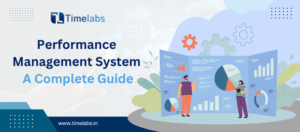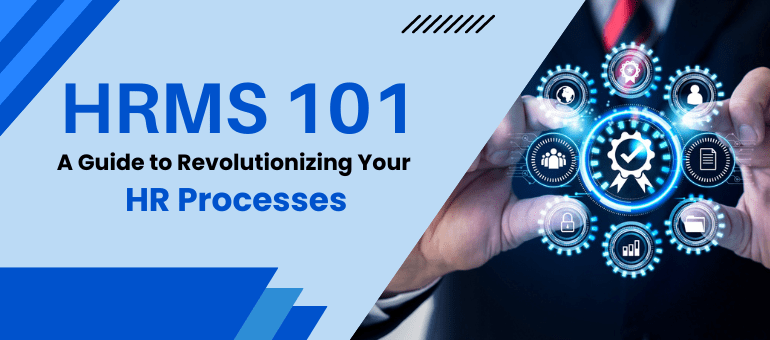HR analytics has become an indispensable tool in today’s modern workforce, enabling organizations to gain deeper insights into their human capital and make data-driven decisions. By harnessing the power of HR data, businesses can optimize their HR programs and initiatives, leading to improved recruitment, performance management, employee engagement, and overall organizational success. In this article, we will explore the latest advancements in HR analytics and how it can revolutionize the way companies manage their workforce.
What is HR Analytics?
HR analytics, also known as workforce analytics, is the process of collecting, analyzing, and interpreting HR data to gain insights and make informed decisions. It involves using technology and statistical methods to extract meaningful information from HR systems and databases. HR analytics encompasses various areas of human capital management, including recruitment and onboarding, compensation and benefits, performance management and engagement, and learning and development.
The goal of HR analytics is to provide organizations with a comprehensive understanding of their workforce, enabling them to identify trends, patterns, and key drivers that impact employee productivity, satisfaction, and overall business performance. By leveraging HR analytics, companies can move away from anecdotal observations and gut feelings and make data-backed decisions that drive strategic growth.
Also, read: Steps for Payroll Automation: A Comprehensive Guide
How HR Data Analytics Improves Decision-Making?
To effectively leverage HR data analytics, organizations need the right tools and a clear understanding of how to use the data to drive decision-making. Simply having access to HR technology is not enough; companies must know how to extract actionable insights from the data. Unfortunately, a Deloitte study found that only a small percentage of HR and IT executives effectively use technology and analytics to their advantage.
To ensure your organization maximizes the value of HR data analytics, it is crucial to explore the numerous ways it can improve decision-making. The good news is that you don’t need a team of analytics professionals to get started; you can begin using HR analytics to address your most pressing workforce management challenges right away. Let’s delve into some specific examples:
1. Streamline Recruitment and Onboarding Processes
One of the key areas where HR data analytics can make a significant impact is in recruitment and onboarding. By analyzing HR data, companies can gain valuable insights into the most effective methods for sourcing, evaluating, and selecting candidates. HR analytics can help identify which recruitment sources yield the best candidates, how long it takes to hire a candidate, and the cost associated with attracting, selecting, and onboarding each hire.
2. Improve Payroll Management
Managing payroll expenses is a critical aspect of HR management. HR analytics allows companies to report payroll expenses, track overtime costs by position, department, and location, and analyze total payroll expenses. By breaking down and analyzing payroll data, organizations can identify areas where labor costs can be managed more effectively, leading to better financial outcomes.
3. Support Diversity and Inclusion Goals
Diversity and inclusion have become top priorities for organizations around the world. HR analytics can play a key role in supporting the development of a more diverse and inclusive culture. By tracking metrics such as the diversity of new hires and the degree of pay equity among employees, companies can identify areas for improvement and take proactive steps to foster a more inclusive workforce. HR analytics can also generate Equal Employment Opportunity Commission (EEOC) reports, ensuring compliance with legal requirements.
4. Examine Benefits for Cost-Effectiveness
HR data analytics can help organizations evaluate the effectiveness of their employee benefits programs. By generating reports on benefit utilization and employee preferences, companies can determine which benefits are most in-demand among employees. This information can inform decisions on benefit offerings, allowing organizations to optimize their benefits packages while managing costs.
5. Measure the Success of Training and Development Activities
Investing in employee training and development is crucial for building a skilled and capable workforce. HR analytics can provide insights into the effectiveness of training programs by tracking employee training hours and promotion rates over time. By analyzing this data, companies can assess the impact of their current development initiatives and identify areas where additional training may be needed.
6. Understand Key Drivers of Engagement
Employee engagement is a critical factor in organizational success. HR analytics can help measure employee engagement levels and identify the factors that contribute to poor engagement. By analyzing engagement survey results, evaluation feedback, absenteeism rates, and turnover data, companies can gain a comprehensive understanding of their workforce’s engagement levels. This information can guide efforts to improve employee engagement and create a more positive work environment.
7. Use Offboarding Feedback to Improve the Employee Experience
When employees leave an organization, their feedback can provide valuable insights for improvement. Standardizing exit interview questions and capturing employee responses through HR analytics can help identify areas where the employee experience can be enhanced. By addressing these insights, companies can make necessary improvements to retain and attract top talent.
Also, read: Significance of Human Resources Management in Every Organization
Transform Your Workforce Management Decision-Making
HR analytics offers tremendous opportunities to optimize talent management activities and drive better decision-making across the organization. By streamlining recruitment, improving payroll management, supporting diversity and inclusion, examining benefits offerings, measuring the success of training and development initiatives, understanding engagement drivers, and leveraging offboarding feedback, companies can unlock powerful insights and make data-driven decisions.
How is Timelabs Unlocking Insights and Driving Decision-Making?
To fully harness the power of HR analytics, organizations should invest in HR software that provides robust analytics capabilities. Timelabs, a leading HR software in India, offers a comprehensive suite of features designed to unlock insights and improve decision-making. With Timelabs, companies can streamline their HR processes, optimize workforce management, and drive strategic growth.
In conclusion, HR analytics is a game-changer for organizations looking to optimize their human capital management. By leveraging HR data and analytics, companies can gain valuable insights into their workforce and make informed decisions that drive success. With the right HR software and a data-driven mindset, organizations can transform their HR practices and unlock the full potential of their workforce. Embrace the power of HR analytics and propel your organization towards a brighter future.
Also, read: Areas of L&D: A Comprehensive Guide to Success



